Top 10 Digital Marketing Mistakes (And How To Avoid Them)
Digital marketing can be a game-changer for your business, but only when done right.
With so many platforms, strategies and tools available, it’s easy to fall into some common traps that waste time, budget, and opportunities.
In this blog, I’m breaking down the top 10 digital marketing mistakes we see time and time again and more importantly, how you can fix them to drive better results and connect with your audience more effectively.
1. Not Understanding Your Audience
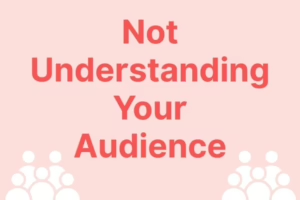
The first step in digital marketing should always be understanding your audience. Your marketing activity should be a direct reflection of your understanding of your audience.
When you don’t know who your audience is, where they live, when they’re active, what they like or dislike or what their pain points are, you will have difficulty getting your brand in front of them or getting your brand to resonate with them.
An easy way to start to understand your audience is by analysing those who are currently engaging with your content. Build a profile including their demographics, key pain points and online behaviours. For example, if you sell running shoes, you should be targeting people who have an interest in running, the outdoors and exercise. The audience would typically be younger, and their pain points could be to do with pace or comfort when running.
Once you understand your audience, the rest of your marketing strategy will start to become much clearer.
2. Posting Without Content Pillars
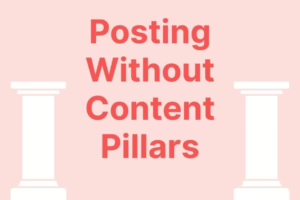
You know who you want to target, so let’s get posting, right? Woah slow down! You can’t start posting without first establishing clear content pillars.
Content pillars reflect your brand’s offerings and your audience’s needs. They ensure that your messaging stays consistent while covering all the different aspects of your brand.
Without content pillars it is easy for your content to stray away from what your audience finds valuable. It is equally likely that without content pillars your content becomes repetitive, which is also of no value to your audience.
Your content pillars should be shaped by audience research. They must reflect the interests and needs of your audience along with touching on the different offerings of your brand.
Here is an example of content pillars, if your brand sells customisable diaries for business professionals your content pillars could be:
- Product – highlight the USPs of your diaries
- Testimonials – highlight positive feedback of your diaries
- Relatable Content – highlight your customers’ pain points in a fun, engaging way
- Employee Content – highlight how your own employees use your diaries in unique ways
3. Investing Too Much Too Early
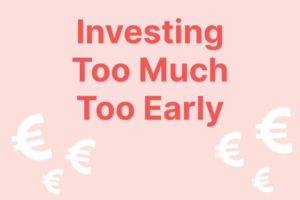
Great, now you know your audience and your content pillars, time to start putting your money where your mouth is right? Wrong(ish)!
New content and audiences need to be tested with a phased approach to ensure you’re getting the best bang for your buck.
By starting spend with a more a limited budget, you can figure out which content and audience combinations work best for your brand. This is even more effective when utilising A/B testing to compare variables and optimise performance.
You can learn more about A/B testing here:
4. Expecting Results Too Quickly
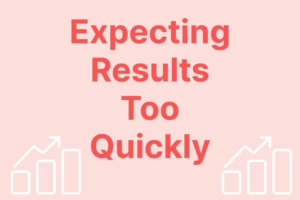
Your ads are running, you’re posting your pillars, you know your audience, so you should be the next Jeff Bezos by now right? Wrong again.
Digital marketing is a slow-building, ever evolving project. Platforms’ algorithms need time to figure out who is responding to your ads (this is known as the learning phase). You also need time to see which of your A/B tests are preforming best (your own learning phase).
Through this process you will learn which of your A/B tests are preforming best and to use that insight to further improve your communications.
It can be disheartening to not see results straight away, but by taking your time, testing thoroughly and gradually increasing your investment, you can ensure that you are better set for the future of your digital marketing efforts and long term success.
You can also support this learning phase by ensuring your tracking tools are properly set up, Meta and TikTok Pixels, LinkedIn Insight Tags and Google Tags. When set up correctly theses tools are invaluable as they can build a map of peoples behaviour from your digital marketing material all the way through the funnel on your website to (hopefully) customers.
5. Not Knowing Your Goals

We’ve already touched on how helpful tracking can be for understanding which messaging is working for your brand but what exactly should you be tracking?
Well, that depends on your objectives. You need to clearly define the goals of your digital marketing campaign. The obvious answer might be sales, but it’s important to look at the bigger picture.
Focusing solely on sales may lead to a temporary influx of business during the campaign, but what happens afterward? Running an engagement, account growth or awareness campaign along side a sales campaign can help carry the momentum forward after the main sales campaign stops.
So with that in mind, an important part of your goals should include a metric like views, follower growth or engagement, not just sales.
6. Quantity Over Quality
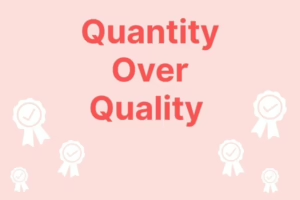
You know your pillars, you know your audience, your ads are running, now it’s time to pump out the organic content right? Wrong!
High-quality organic content is an extremely important part of a digital marketing campaign. If people click on your profile from an ad, you want to ensure what they’re seeing is valuable and aligned with their interests.
You also want to ensure that any new followers you gain are engaging with your content and sticking with you (not unfollowing). No one wants to see repetitive boring content on their feeds.
Instead of flooding your feed with rushed, irregular posts, you should focus on creating high-quality content within your established pillars, that is posted consistently. Quality content builds trust, credibility, community and long-term growth.
7. Not Using Your Content Well
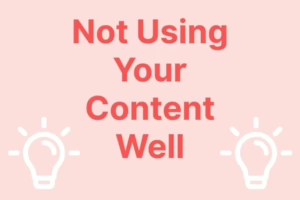
Okay, I have already yapped on about the importance of high-quality content, but what does that mean? It means content that provides value to both your brand and your audience. Some examples include, industry knowledge posts, testimonials, engagement focused posts, ect.
The easiest way to create high quality content is by utilizing the content you already have:
- If you already have Google Reviews, publish them as testimonials on your feed to boost your brand’s credibility.
- If you already have knowledgeable employees, tap into their expertise to create posts that highlight your brand’s authority in your industry and show that you understand your customers’ pain points.
- If you already having insightful discussions about topics in your industry with your customers, extend those to the rest of your audience through engagement posts.
- If you already have sales decks you can turn them into educational carousels.
- If you already have blogs, you can pull out key quotes to make striking thought leadership pieces.
- If you already have FAQs, great news you can make and FAQs post!
Work smarter, not harder. Your best content might already be at your fingertips.
(PS all these content tips can work in reverse, content made for socials can be used across your brand)
8. Neglecting Your Keywords
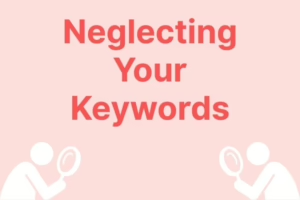
Another key aspect of high-quality content is making sure that it can be found easily. One of the best ways to do this is by utilising keywords.
Many industries have their own built in jargon, but is that jargon be what your brand’s potential customers are actually searching for?
You can compare the search popularity of words and search terms through services like, Google Trends and Answer the Public.
Once you know which terms your audience uses most, work them into your content organically and strategically, in headlines, captions, blogs and bios, where they make sense and support readability.
9. Not Understanding Social Media SEO
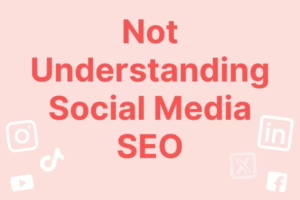
SEO isn’t just for Google anymore. More people are using social media as a search engine year on year, especially on platforms like TikTok and Instagram.
Content posted on social media platforms can be (and should be) optimised to appear in search results within the platform.
This can be achieved by including searchable phrases in your content. These could be common questions, popular services/products in your industry, or simple phrases your audience is likely to search.
An example of this would be if you are posting for a skin care brand, you can include a phrase such as “best skincare for dry skin” in your caption.
With Instagram recently announcing that its content will soon appear in Google search results, understanding and applying social media SEO just got even more important.
10. Not Using RIPPLE
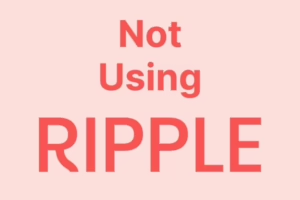
My last nugget of wisdom? Talk to RIPPLE today!
We can help curate a digital marketing strategy that is tailored to your brand and your brand’s goals.
Whether you’re starting from scratch, refreshing your current approach, or just looking for expert advice, we’re here to help.
Reach out to us today to start your digital marketing journey.
Avoiding these common mistakes can make a huge difference in how your digital marketing performs.
From understanding your audience to making the most of your content and spend, smart digital marketing starts with strategy, consistency and continuous learning.
If you’re still unsure on how to avoid these common mistakes, let’s chat!

Written by Emma Kate Rowlette
Ripple, Moving Brands Forward
How Much Should Small Irish Businesses Really Spend on Marketing in 2025?
Let’s be honest – when it comes to setting a marketing budget, most small business owners in Ireland feel a little… unsure. We get it. One of the most common questions we hear at RIPPLE is: “How much should I actually spend on marketing next year?”
Whether you’re running a boutique hotel in Kerry, an eCommerce store from Galway or a legal practice in Dublin, figuring out the sweet spot between spend and return is absolutely crucial. And with the ever-changing digital landscape, AI tools popping up everywhere and consumers behaving more unpredictably than the Irish weather – having a solid marketing plan (and budget!) is no longer just “nice to have.”
So Edwina, our account director has broken it down for you.
If you’re hoping to grow, compete, or just stay visible next year your marketing budget needs to be more than just a leftover budget line item. The companies we work with that invest strategically in marketing see:
- More leads & sales (hello bookings and checkouts!)
- Stronger brand recognition (especially online)
- A leg up on their competitors (yes, even the flashy ones with TikTok accounts)
So.. How much should you spend?
There’s no exact science, but industry pros (like the Small Firms Association and our pals at HubSpot) recommend spending 5% to 10% of your annual revenue on marketing. That’s a solid baseline, but it’s not one-size-fits-all. Here’s what we consider when helping clients at Ripple set budgets:
1. What Stage Is Your Business At?
- New or scaling? You’ll want to invest more (closer to 10–15%) to build awareness fast and make your mark.
- Established with a loyal base? You might focus more on retention, automation, and upselling — so your spend might be more strategic than splashy.
2. What Industry Are You In?
- If you’re in a competitive space like law, finance, tourism, or eCommerce, you’ll likely need to shout louder (and pay more) to get noticed.
- Local services (like plumbers, salons or fitness studios) can often succeed with leaner, hyper-targeted spend.
3. What Are Your Marketing Goals?
- Are you trying to get your name out there?
- Do you need leads on tap?
- Expanding into new areas? Launching something exciting?
Your goals should shape your spend. Otherwise, it’s just guessing.
4. Are You DIY-ing or Partnering with an Agency?
Doing it yourself can work – if you’ve got the time, tools and know-how. But we’ve seen many businesses burn through budget with poor targeting or confusing strategies.
Working with a team like RIPPLE means you can:
- Focus on running your business
- Trust that your budget is being spent wisely
- Get measurable results, not just “likes”
A Real-Life Look: €20,000 Annual Marketing Budget Breakdown
Here’s how we typically see a smart, balanced marketing budget play out for small businesses in Ireland:
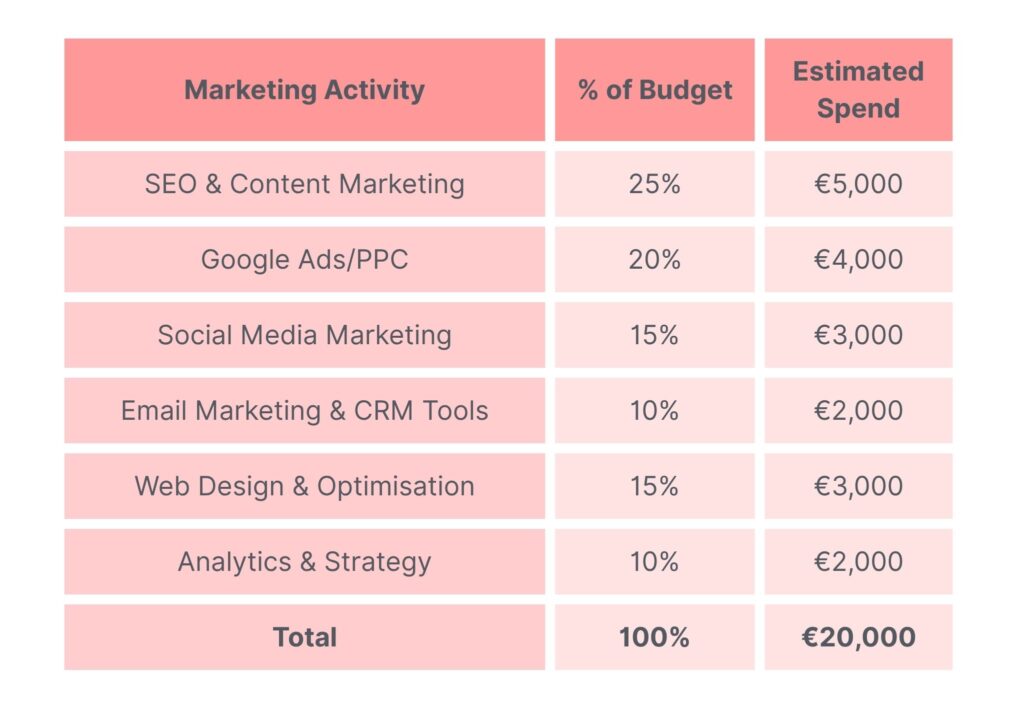
Don’t worry if your budget isn’t that size just yet. Even if you’ve got €500–€1,000/month, you can still make waves with:
- Local SEO (be where your customers are searching)
- Paid social media ads (great bang for buck)
- A lean, mean content machine (blogs, newsletters, helpful guides)
Here’s the truth: there’s no magic number. But when you align your budget with your business goals, audience, and resources – marketing becomes less of a cost and more of an engine for growth.
At RIPPLE, we love helping small Irish businesses thrive. If you’re unsure where to start or just want to sanity-check your plan for 2025, let’s chat.

Written by Edwina Carey
Ripple, Moving Brands Forward
Influencer Marketing in 2025
I remember trusting every product recommendation from my favourite influencers. But now, with endless ads and sponsored posts, it’s harder to know what’s genuine.
Brands are starting to move away from big influencers, turning to micro-influencers and employee-generated content to build more authentic connections.
In this blog, I’ll explore how influencer marketing is changing and why smaller, more relatable voices are having a bigger impact.
The Rise of Influencer Marketing

Around 10 years ago, Instagram became to go-to platform for brand promotion. Influencers, especially in beauty and lifestyle, grew their audiences by sharing makeup tutorials, production recommendations and skincare tips. As a teenager, I trusted beauty influencer’s recommendations like they were gospel.
During this time, brands relied heavily on influencers because
- Audiences trusted their opinions
- Their reach could drive massive sales
- Their content was fresh and engaging
The Decline of Big Influencers

Fast forward to today, things have changed. The influencer market has become over saturated and audiences are more sceptical than ever. Why is this?
- Too many sponsored posts and declining engagement rates.
- Promoting competitor brands making it hard to believe in genuine recommendations
- Trust issues – with endless ads, affiliate links and PR gifts making it difficult to tell who is truly recommending a product
- Cost VS ROI – mega influencers charge huge fees and brands do not often see the return on investments they once did
The Rise of Micro Influencers and Employee Generated Content
So, what’s the solution to the oversaturated influencer market?
Micro Influencers
- Consistently deliver higher engagement as they build real relationships with their audience for their niche
- Their followers trust them as experts in their industry
- Better ROI – this is a cost effective option as brands get a higher ROI at a lower cost
- Authenticity – people see them as relatable individuals rather than celebrities pushing products for money
Employee Generated Content
- Employees are seen as authentic brand advocates rather than a paid promotor
- Their brand expertise is far superior than any influencer
- Encouraging employees to create content is cheaper and more sustainable than influencer partnerships
- Employee generated content humanises the brand as people connect more with real people than a corporate logo
How should brands leverage this?
Well, how can brands leverage micro influencers and employee generated content?
Instead of relying on a single big-name influencer, brands can achieve better engagement by collaborating with micro-influencers who already resonate with their target audience. By choosing creators whose values align with the brand, companies can foster more authentic connections. Additionally, empowering employees to share their experiences on social media and offering behind-the-scenes glimpses can strengthen customer relationships and enhance brand trust.
In conclusion
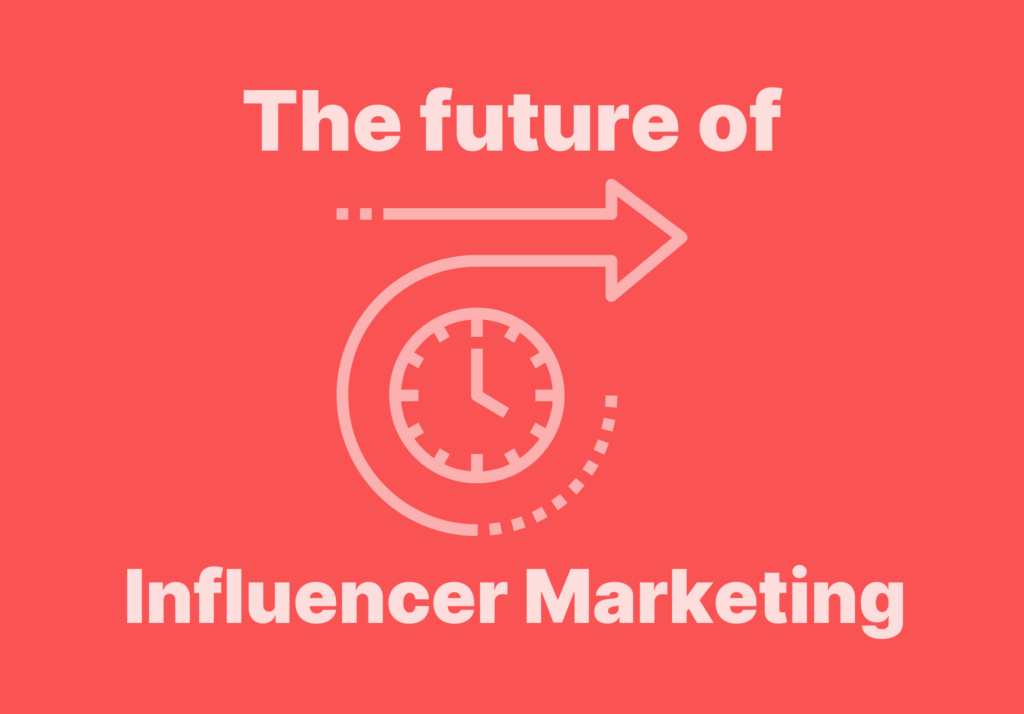
Influencer marketing isn’t dead, but it has certainly evolved. Success will shine through for brands that embrace authentic and relatable content. It’s time to rethink marketing strategies and focus on genuine engagement rather than sheer follower counts.
If you’d like help with refining your marketing strategy, we’d love to help! Reach out to [email protected] to discuss with us today.

Written by Lauren Redfern
Ripple, Moving Brands Forward
Social Media Trends 2025:
What You Need to Know

Social media is a constantly evolving space, and staying ahead of the curve is key to standing out.
Based on emerging trends, we’ve compiled our top predictions for 2025 to help you navigate the landscape effectively.
Let’s dive in!
1. Carousels are taking over!!!

Carousels are outperforming single-image posts across multiple platforms including Instagram and LinkedIn.
Even on TikTok, we are seeing an increase in the number of carousels that are getting boosted onto the FYP.
Let’s not discount Reels, they are still the best way to reach a new audience on Instagram with Reels being more likely to be pushed out to Non-Followers than other forms of content. If you want to connect with your existing audience, carousels are the way to go as they are pushed out to your Followers first.
On LinkedIn, Carousels are the star of the show being favoured over all other content types.
Carousels on platforms like Instagram also often have increased visibility because they encourage user interaction. If you don’t swipe through all the slides of a carousel, the algorithm may resurface the same carousel in your feed later, starting from the next unseen slide. This design aims to maximize engagement by ensuring users see all the content in the carousel over time.
2. Bigger = Better
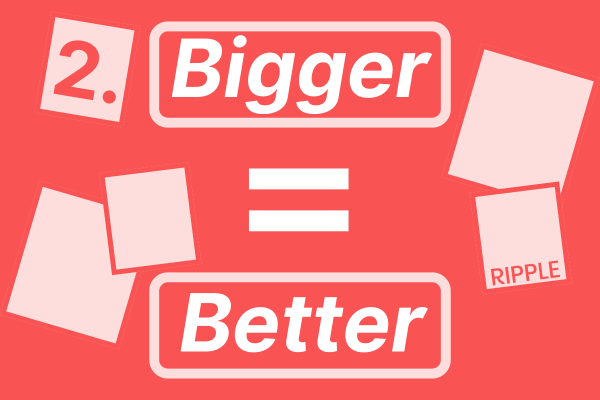
Instagram is pushing for an increase in post sizes from a 1×1 aspect ratio to a 4×5. But this isn’t just true for Instagram across all platforms – bigger really is better.
Bigger posts take up more screen space and capture attention better. They also allow for more information to be communicated on them.
Instagram has just started to roll out the 4×5 aspect ratio in the profile grid as well, showing a big push for this updated post sizing.
3. Bigger ≠ Better – for captions
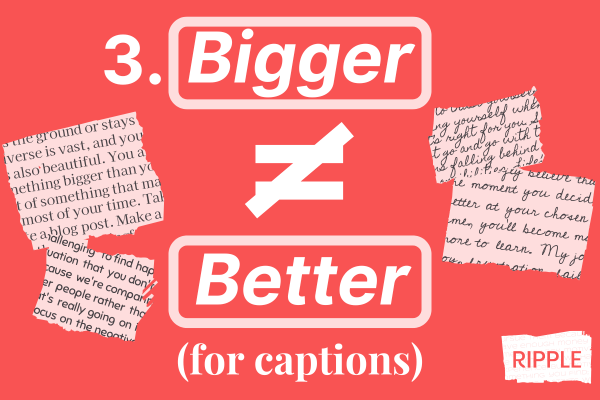
People are not reading captions so stop putting all your best ideas in them. Move most of your copy into the graphics of your carousels.
Your captions should be two to three sentences max and filled with high-quality searchable keywords.
For an even stronger caption include a call to action to either engage with the post (such as commenting or saving the post) or engage with your profile (such as following or sending a DM).
4. Do hashtags even matter?
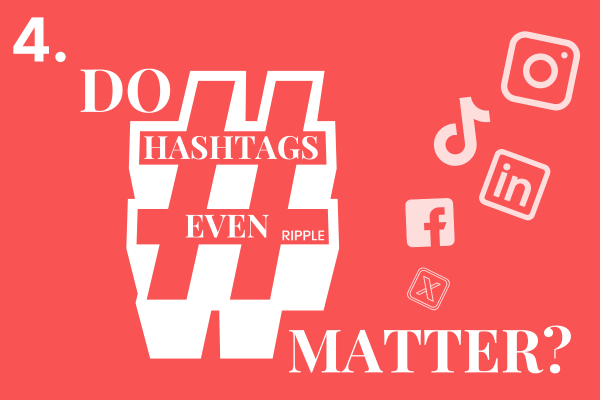
No hashtags do not matter as much as they used to. With Instagram pulling back on followable #s and reducing the number of recommended hashtags down to 4, hashtags are becoming increasingly less popular.
Hashtags are moving more and more to just a tool to categorise your content. This can also be achieved through the use of strong keywords in your captions.
So should you be using hashtags? Yes, but, focus on using a small amount of highly relevant #s, 4 to 8 max per post.
5.TikTok is still ruling the roost.
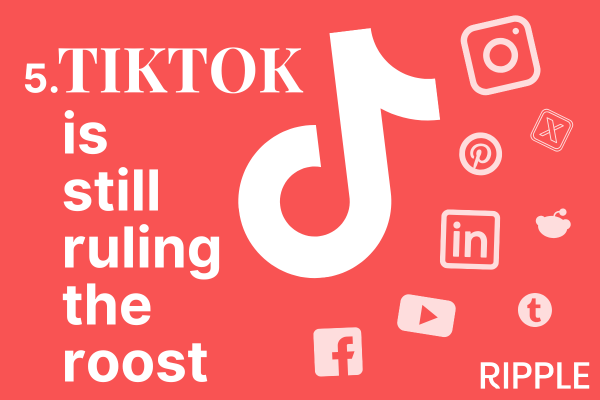
Even with the brief TikTok ban in the USA, the platform still holds strong as a social media powerhouse
With TikTok shop being introduced in Ireland, it can only go up from here for the platform.
TikTok has one of the best algorithms out there with content being easily searchable, unlike other social media sites. This means it is becoming a go-to space for people to research and engage with their interests.
But what is the future for TikTok? It is currently hard to predict where the platform will be in a few months, as I write this there are a multitude of rumours swirling around the future of the platform.
But for now, TikTok is still one of the strongest platforms to grow a following.
6. Quality > quantity

With more and more content uploaded to each of the platforms each day, people can pick and choose which content they want to consume.
High-quality content is the only way you can stand out. High quality does not mean a high budget. It means good graphic quality, easy to understand and engaging.
Content which is sales-focused doesn’t do as well as other types of content. Your 2025 content should focus on building a community through relatable and informative posts.
These posts, while not sales-focused can help generate sales as they build a connection with your audience.
7. Hooks are your best friend.
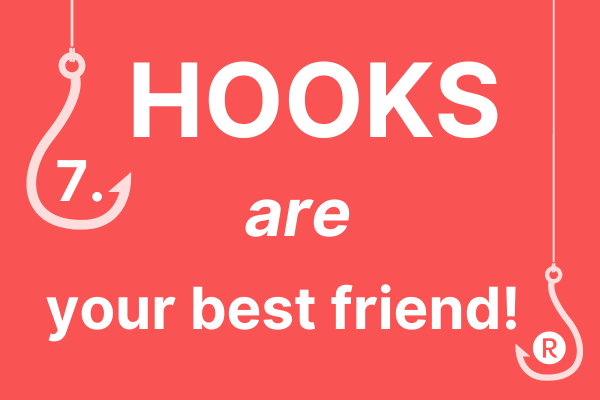
We all know people’s attention span is getting shorter, you need to reel them in within the first few seconds of your content.
For video content, use visual hooks such as movement in the first second. An example of this is sitting down, walking into a frame or fixing your hair.
You can also use a content hook such as starting with a question or impressive statistic that people will want to know more about.
8. Comments are your new posts.
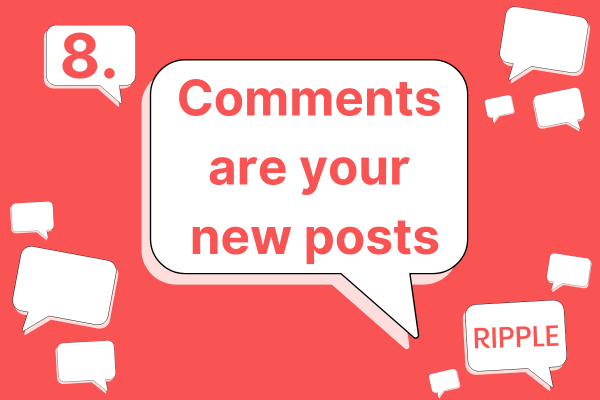
It is becoming increasingly common to see brands in comment sections. Commenting on already popular posts is a great way to grow awareness as the content is already being seen.
There are some important things to keep in mind if you are going to implement this into your 2025 strategy.
First, is the content relevant to your brand? If you are not adding to the discourse your comment will fall to the bottom. Comment with a relevant question or witty banter.
The second thing you have to consider is that unless your brand is extremely well known, a household name, one comment on a viral post will not increase your brand visibility. You have to be continuously seen in comment sections before users will start to recognise your brand.
These comments should also be paired with a brand awareness campaign as people will begin to recognise the brand and not what the brand is about.
What About Trends we don’t want to see continue into 2025?
There are so many exciting changes on social media that you can jump on to boost your impact.
But what should you avoid or leave in 2024?
1. Bad AI

AI is on the rise, it can be a helpful tool across our daily lives. But we are increasingly seeing it be used in lazy ways.
Many people can now tell when text has come directly from the mouth of AI without a real person editing it down and adding their own voice to it.
Social media is starting to be overrun by AI images and videos. These images are starting to feed back into the image generators and we can now see that the images appearing on social media are starting to look less and less convincing.
AI can be an extremely useful tool in social media from idea generation to enhancing the quality of an image, this year we want to see AI used tastefully.
2. QR codes

Please stop posting QR codes on social media. QR codes are an amazing tool for print media as you can simply scan the QR code with your camera and be on any URL in the world in seconds.
QR codes however are not meant for digital media, a link in the copy (or bio for Instagram) is a much more efficient and professional way to direct people to your website.
3. Links in Instagram Captions

While I’m on the topic, please stop posting links in Instagram captions. We can all agree it is frustrating that you cannot post a link on Instagram but they have introduced multiple links in bios for a reason. You can also use free tools such as LinkTree.
A link in an Instagram caption is just frustrating to the user as if it is something that they would like to look at they have to manually type the URL into their browser (that’s if they could be bothered).
A link in your bio is a much nicer experience than this and will mean people are more likely to go to the site you are directing them to.
4. Micro Trends
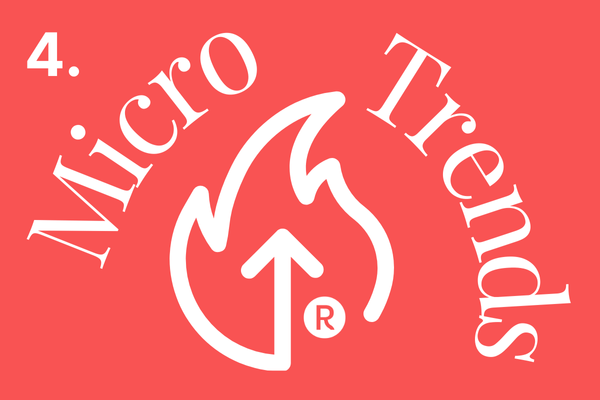
We love jumping on trends as much as the next agency but this year it may be time for everyone to be more demure and mindful about which trends they jump on.
Trends come hot and fast now with some only lasting a few days before they are seen as outdated. If you can’t jump on the trend while it is on the rise you may run the risk of seeming outdated.
Before you even jump on a trend think to see if it really suits your business. If you can not identify the link quickly you run the risk of it seeming forced. Social media is increasingly becoming a place where people are looking for authenticity, so don’t force a trend that is ingenuine.
Instead of jumping on a trend, you should focus on making “real” content that builds a community. Create content that your audience will relate to, and show them you understand their pain points.
In conclusion
Social media in 2025 is all about being strategic, authentic, and audience-focused.
From leveraging carousels and TikTok to prioritising quality content and meaningful engagement, these trends will help you stand out and build a stronger community.
Stay tuned for more tips and insights to help you dominate the social media game this year!

Written by Emma Kate Rowlette
Ripple, Moving Brands Forward
How to Increase Social Media Engagement: Creating Visual Impact
Good content design is not optional – it is your engagement superpower and is the difference between being noticed and being ignored on social media.
Nowadays, social media channels are visually focused and while it seems like anybody can design a social media post, let us explain why investing in your social media design and graphics is paramount to driving higher engagement on your account.
Firstly, let’s think about the decision-making process for a user to engage with your post.
- Scroll
- Stop
- Read
- Engage
Right now in Ireland, we are seeing an increase in posts about the upcoming election. While there are hundreds of sources sharing important, helpful and relevant information; I bet you’ll notice that the ones being reposted have key design elements that support the content being presented. Posting an infographic with great content design helps to spark engagement, which as a result is rewarded by the algorithm and will help your post reach a larger audience.
Key Design Elements For Good Content Design
While following brand guidelines include bold visuals, good visual hierarchy and a consistent layout. Make use of negative space, vibrant colours and striking imagery. Most importantly, focus on the call to action.
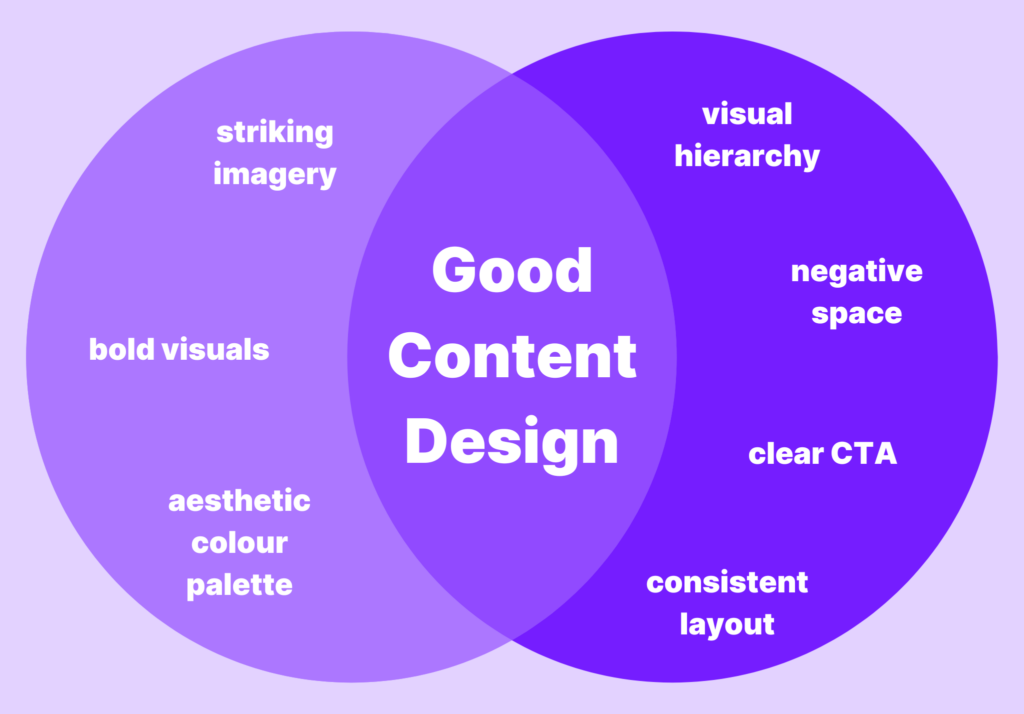
Checklist For Good Content Design
The design of your post encourages interaction and boosts its shareability and as a result gives you better engagement. If you think you should evaluate your current design but you’re not sure where to start? Don’t worry, we can help! Here is your checklist for effective content design.
- Choose complimentary colours from your brand’s colour palette.
- Lay out the information with strong visual hierarchy to ensure you are communicating the most important information.
- Include variations of your logo so that your work is branded throughout. If someone does share your post, you want to guarantee that people are aware of your brand.
- Don’t underestimate the importance of readable, well-chosen fonts that match the tone of voice of your brand and your message. This can be a complicated task, so check out our blog on Why Fonts Matter for guidance.
- Embrace negative space but use your brand assets to add some fun to your posts.
At Ripple, we can help unleash your brand’s potential by levelling up your content design. Reach out to [email protected] and let’s chat about how we can improve your engagement online – starting with your content design.

Written by Lauren Redfern
Ripple, Moving Brands Forward
Should Going Viral Be Part of Your Content Strategy?
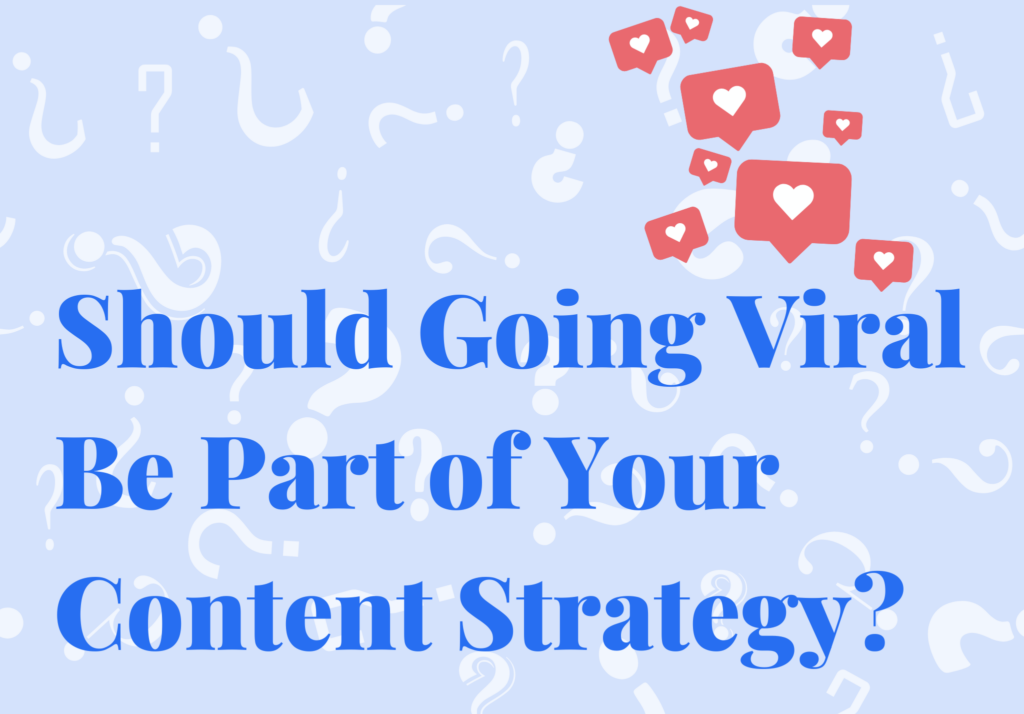
In the world of social media, going viral seems like the ultimate achievement—millions of people suddenly discovering your brand sounds like a dream, right?
But is it really the best focus for your content strategy?
In this blog, I’ll break down the ups and downs of chasing virality, share some real-life experiences, and offer tips on what your content strategy should actually be aiming for.
Let’s cut through the hype and see what truly counts when it comes to building a strong, engaged online community.
The Pros
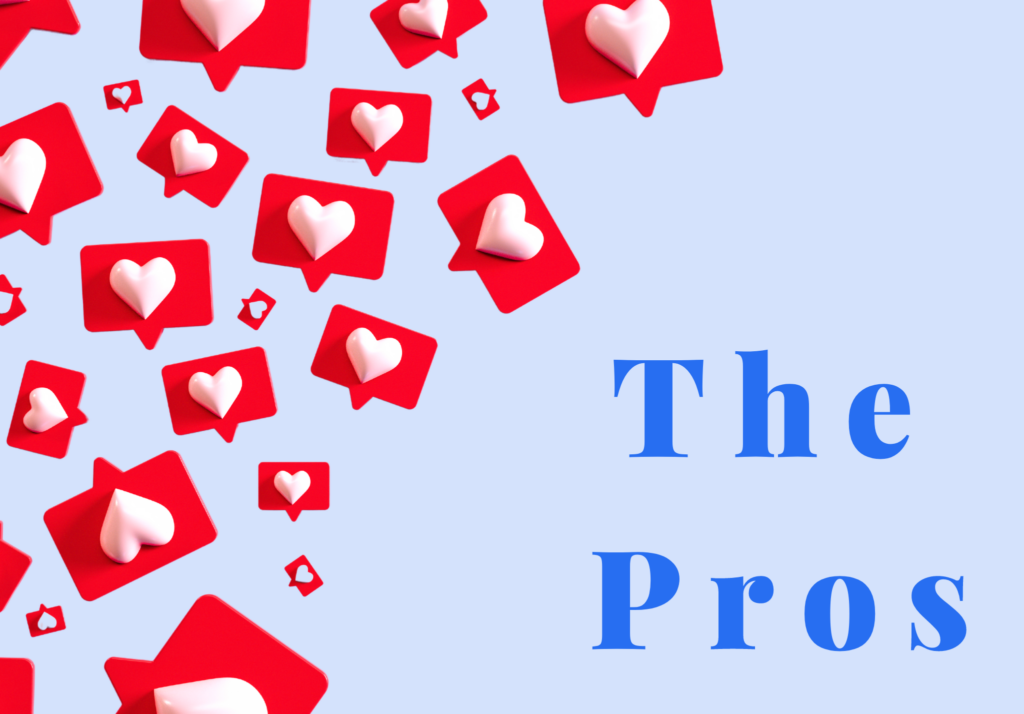
Going viral is a no-brainer, right? Isn’t that the goal of social media?
Going viral can seem like the perfect way to grow your brand’s reach, with millions of eyes viewing your product or service! It’s true that a viral post can cause a huge spike in engagement and maybe even a spike in purchases, but should it be a focus of your content strategy?
How To Go Viral

First, how do you even make viral content?
Getting eyes on your post is like trying to craft a magic potion—there are so many ingredients, each constantly changing. There is no magic time to post that guarantees virality, no magic sequence of hashtags that will push you out to millions, and no guarantee that your content will resonate with your audience enough to compel them to share it.
Going viral, even if you have cracked the magic potion of social media posts, is hard. Your content has to compete with every other piece of content posted that day (or even that week). You have to compete with millions to gain attention.
Not only will you have to crack the magic social media formula, but you also need to create content specifically designed to become viral. Viral content tends to be general, click-baity, and impersonal.
The Cons
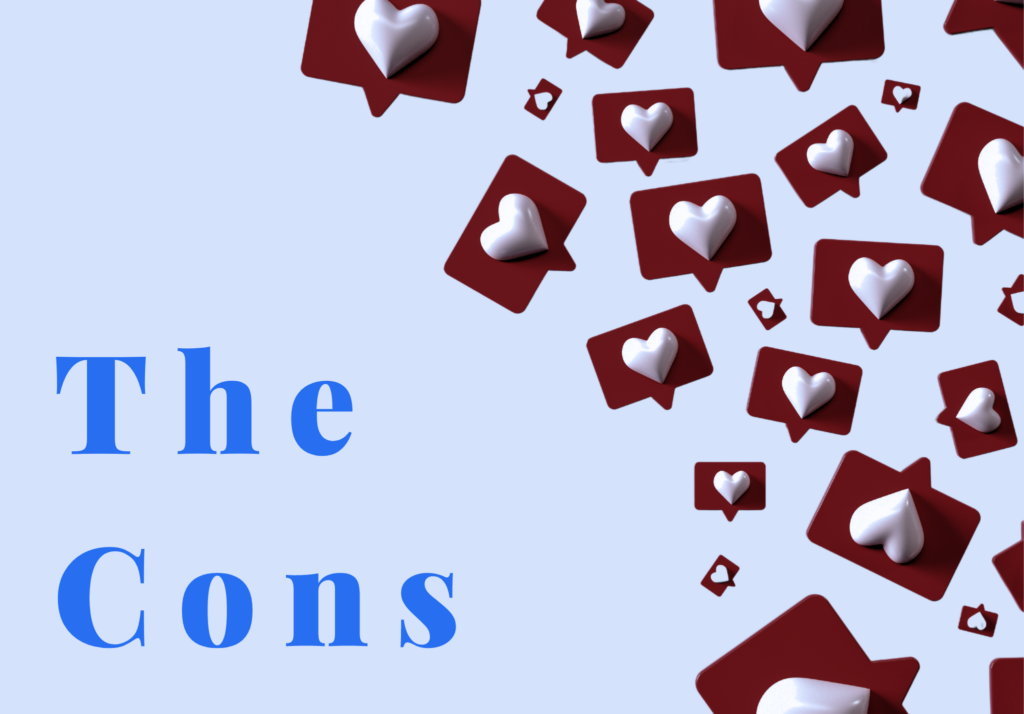
If you do manage to gain the attention of millions, you’ve made it, right? You’re viral!!!
Well, yes and no—you have the eyes of the world on your content, and hopefully, a few are engaging meaningfully and converting, but that’s not a guarantee.
The type of content that goes viral is usually not the type that will lead to direct conversions or a larger, more meaningful following for your brand account. The engagement tends to be surface level: an increase in likes and impressions.
Virality can remove you from your already built community as they get drowned out by the masses. It’s harder to communicate with them when you are trying to create content to keep the attention of your new audience.
The Personal Bit

How do I know that a viral video is not a guarantee that you will gain thousands of new followers and help you build a community? I can finally admit that I have personally gone viral on TikTok. A video I posted went viral, hitting almost 4 million views.
You’d expect a video that was seen by 4 million people would have a huge impact on the follower count of that account. Well, you’d be wrong— that account still has just under 1,000 followers.
So, virality does not mean you will increase the size of your community, but that’s not the only impact that viral video had on that account. The video itself had a less-than-positive reaction, with several of the comments being quite cruel. These comments did not just limit themselves to the viral video but spread throughout every video posted, past and present.
Going viral attracts attention, but it may not be the attention you’d want.
Do This Instead

So what should be in your content strategy if not going viral?
You should aim to fill your feed with quality content that is of value to your community.
What does that look like? It’s different for everyone, and the best way to find what will work for you is to reach out to us directly at [email protected].
The Conclusion
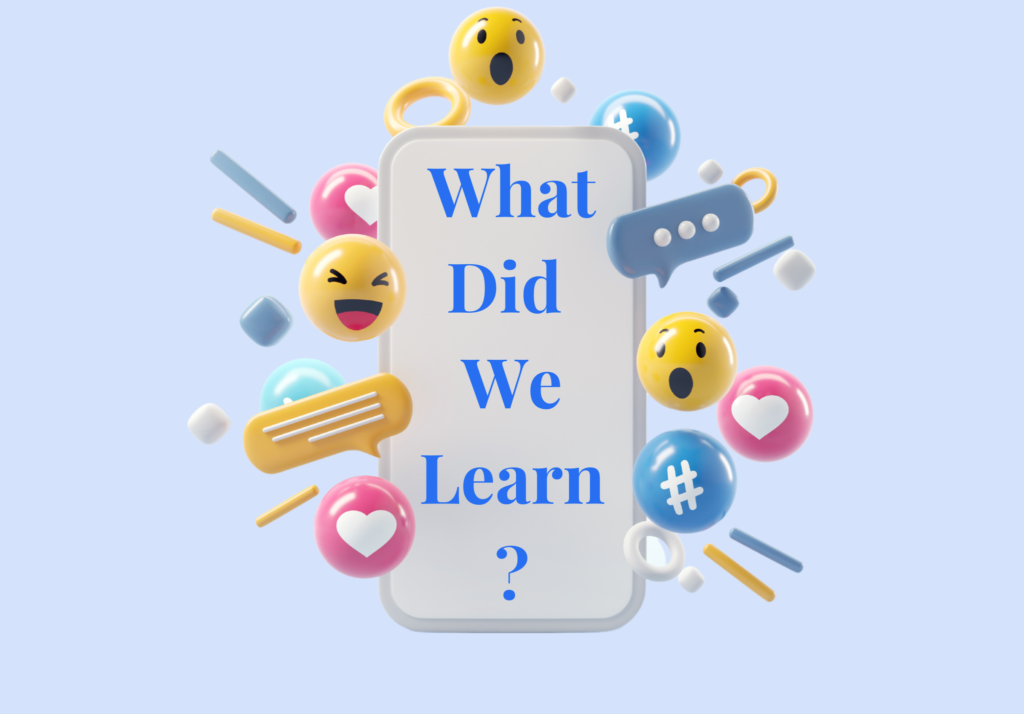
Having a post go viral is not a problem—it’s exciting and can lead to a spike in engagement and, in lucky cases, a spike in conversions!
The problem is when you focus your content plan on trying to go viral, you make your content less valuable to your community and more generic and click-baity.
Your content strategy should focus on content that is valuable to your community.

Written by Emma Kate Rowlette
Ripple, Moving Brands Forward
Why Fonts Matter!
Let’s talk fonts! The font you choose plays a crucial role in how your brand is perceived. Choosing the right font that is right for you is important to communicate brand identity. With over 200,000 fonts to choose from, it can be an overwhelming task.
When choosing a font that is the right fit for your brand, firstly you should ensure it aligns with the purpose of the brand. For example, fonts with serifs (such as Times New Roman) are typically used in print and are fitting for a formal document whereas sans serif fonts (such as Arial) are popular for digital mediums and are very fitting for a modern brand.
Things to consider when choosing a font
A font with good readability is essential, especially for body text. You should consider the font size, spacing between individual letters as well as how it displays on different media. Ensure the font you choose works is versatile and works well on screens, business cards and billboards.
Fonts add personality! Your chosen font should also match the tone of your brand and content. For example, what you use for a wedding invite probably won’t be what you use for a quarterly report.

So, what are some 2024 font trends you can follow?
1) Contrasting Fonts
Using contrasting and clashing fonts is an emerging trend which can help your brand stand out. The visual contrast and hierarchy make key messages stand out. Pairing a bold font with thick and an italic script font is an eye-catching way to communicate a brand.
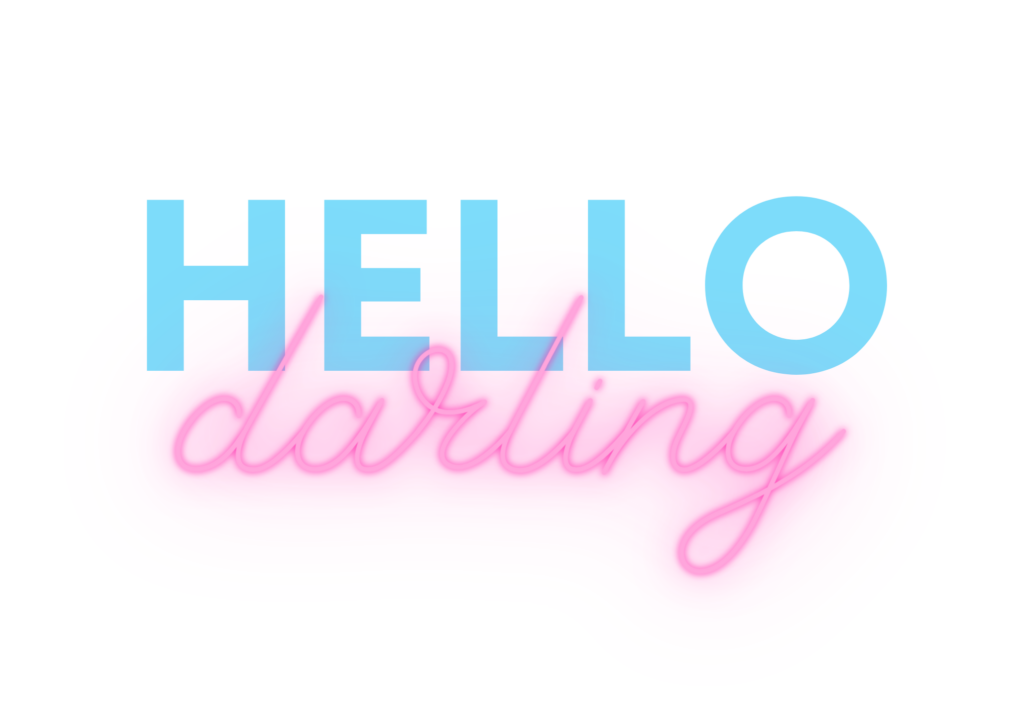
2) Bold Minimalism
Bold minimalism, and the ‘less is more’ perspective has stood the test of time and remains one of the more popular font choices. Bold minimalism is typically used in videos, branding, and design. The clean, striking nature of the visuals make an impact and are powerful for communication.

3) Playful Design
Playful design is a trend centred around having fun with design. Along with your chosen font, the addition of elements like quirky illustrations and gifs are engaging to an audience and keep them entertained. Playful design infuses personality and allows you to play with colour palettes, illustrations and to think outside the box.

I am currently loving the rise of retro fonts in the last year. I love how funky they are and the vibe they add to graphics. Retro fonts are great to convey a sense of nostalgia and heritage as well as adding unique character and style. While having a classic look, they have more modern features.
Specifically, I am enjoying groovy retro display fonts such as Nectarine. I like how the letters fit together and how the letters are not the same thickness throughout. Fun colour palettes also translate with retro fonts to bring your design to life!
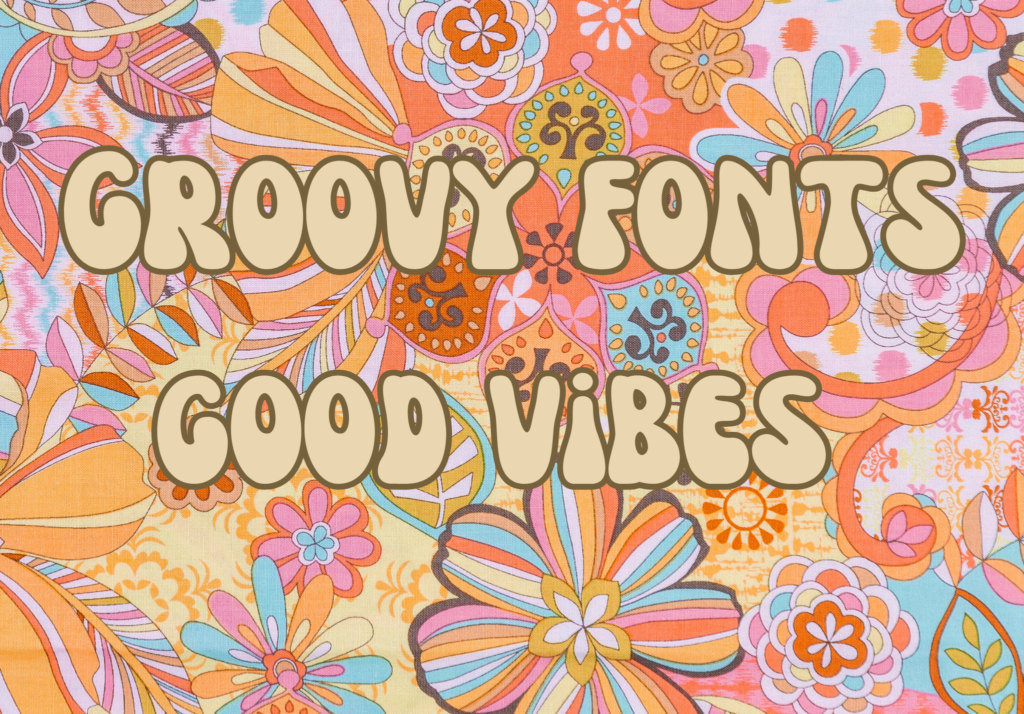
Overall, your font choice matters! It is important to spend time selecting a font that fits your brand and brand aesthetic. It is key to have a font that translates on different mediums. But ensure to play around with different fonts and trial them because making your brand stand out is how people will remember you.
At Ripple Marketing, we understand how important it is to tell your brands story to ensure the success of your business. Get in touch with our creative team now to see how we can boost your branding – [email protected].

Written by Lauren Redfern
Ripple, Moving Brands Forward
Outdated graphic design trends to avoid this year
Design something that is constantly evolving and it is important to stay updated and maintain a fresh perspective to create visuals that can move an audience. A quarter into 2024, let’s explore design elements and trends and shine a light on those that had difficulty withstanding the test of time and fell out of favour.
1) Bevel, Emboss, Drop Shadows
Bevels, embossing, and drop shadows have become outdated due to the dominance of flat minimalism, the need to optimize designs for digital platforms and the progression of design aesthetics towards simplicity and clarity. While these techniques may still have niche applications, they are generally considered old fashioned and tacky in today’s design practice.
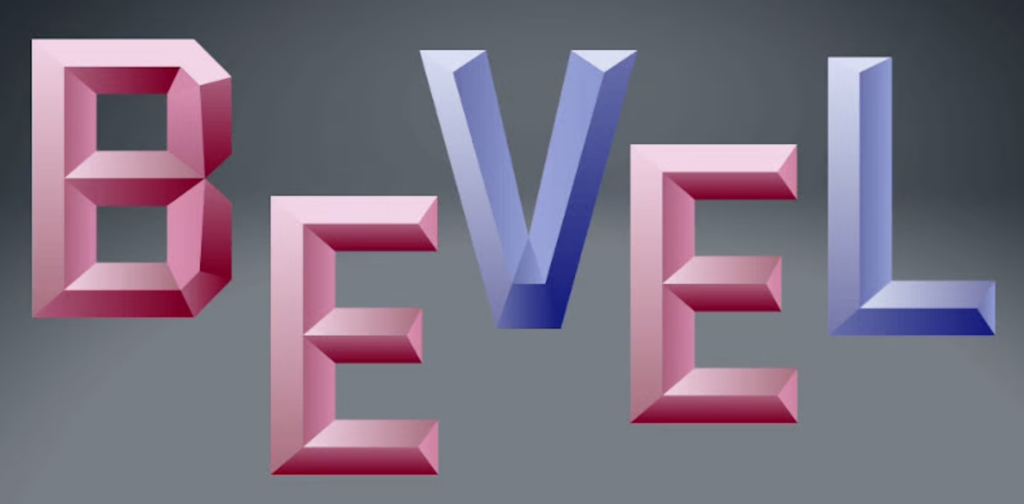
2) Water colour fonts
Popular with a very specific audience, these can work for a particular look and aesthetic, but most of the time, it will just bring your design right back to the 2010s and not in a cool retro way (not enough has passed for it to be considered nostalgic anyways). With its visibility issues and tenancy to look unreliable, these typefaces have fallen out of favour in recent years clashing with the current trend being having a focus on a simplified, minimalist aesthetic.
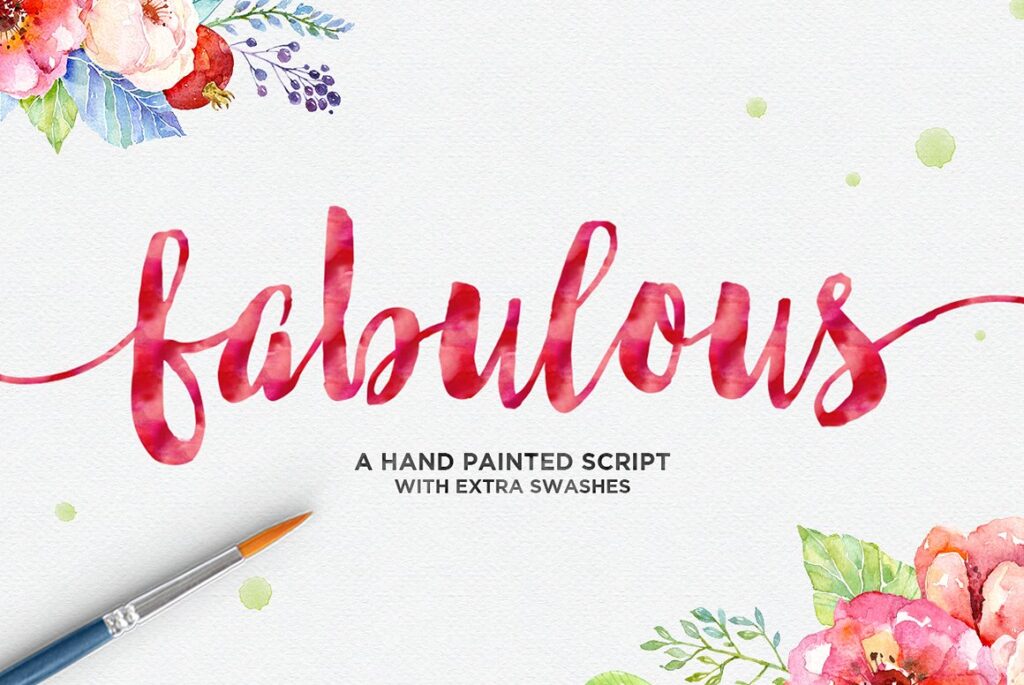
3) Excessive usage of stock imagery
The usage of stock imagery in graphic design is considered outdated due to its lack of originality and limited customization. While one or two can be an helpful tool, overloading with them might risk your brand from looking inauthentic and lazy.
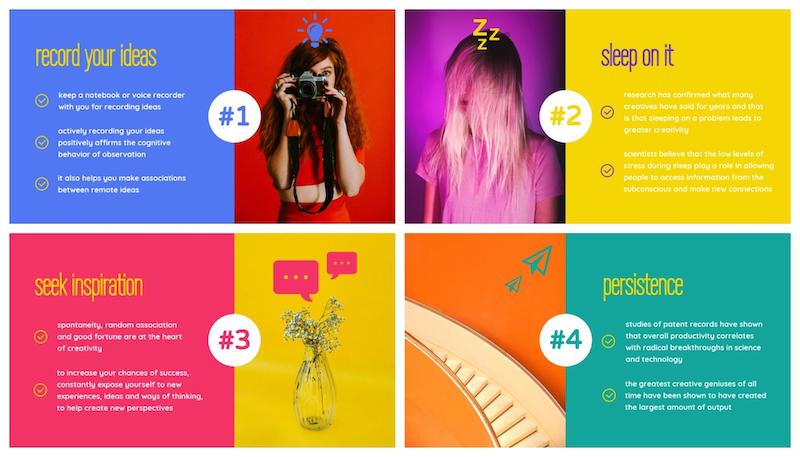
4) Warm neutral colour palette
Okay, I mean this specifically for graphic design, so don’t kill me. Warm neutral colour palettes do still have their place in the design world in other contexts. But in creating flat 2D designs, they still may be considered slightly outdated in the broader landscape due to its limitations to expressing a wide variety of emotions, going against the current trend of creating bold and strong designs that can make an impact.
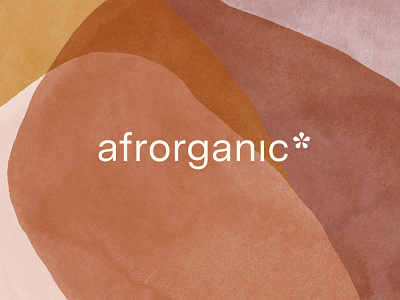
As we conclude our exploration of outdated graphic design trends, it’s important to remember that design is not one-size-fits-all. While certain elements may have fallen out of favor in mainstream design, they can still find relevance in niche contexts or specific aesthetic preferences.
In today’s rapidly evolving marketplace, it’s crucial to design with an eye toward the future, anticipating how your brand will resonate with audiences in the years to come. By staying adaptable and responsive to shifting trends and consumer preferences, you can ensure that your designs remain fresh and impactful.
At Ripple Marketing, we understand the importance of staying ahead of the curve in design. Our team of experienced designers specializes in creating visually compelling and on-trend graphics that elevate brands and engage audiences. Whether you’re looking to refresh your brand identity or develop a new marketing campaign, we’re here to help.
For inquiries about our design services, please don’t hesitate to contact us at [email protected]. Let’s collaborate to bring your vision to life and propel your brand into the future of design excellence.

Written by Subin Lee
Ripple, Moving Brands Forward
Google Ads Performance
How to get the best results from your Ads
With billions of searches happening every day, Google Ads is a powerhouse in online advertising. Imagine all those curious folks typing away their questions, and your ad popping up right where they’re looking! If you’re new to the online scene or need a boost for your product, Google Ads can be your best friend, getting you in front of new audiences pronto and complementing your SEO efforts. But, like with any marketing strategy, there are some tricks of the trade you should know to make sure your campaign shines.
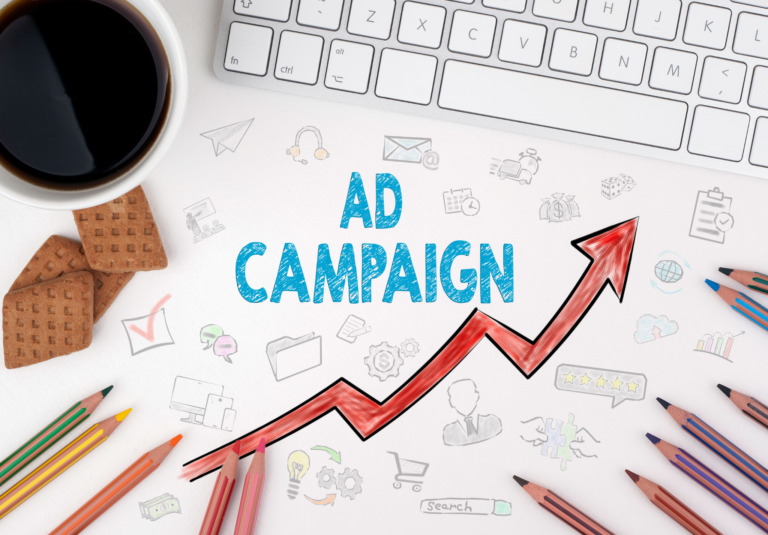
How does Google advertising work?
Google Ads offers a bunch of ways to showcase your stuff – whether it’s products, services, or content. At its core, it’s a pay-per-click (PPC) platform. You bid on keywords and pay only when someone clicks or views your ad. Fancy stuff, right? But wait, there’s more:
Campaign Types: Google Ads isn’t just about search. You’ve got options like display, shopping, video, app, smart, and Performance Max campaigns. The last two are super cool because they use fancy machine learning to make your ads even better.
Placements: Your ads can pop up in lots of places – on Google’s search results, YouTube, Gmail, or even on affiliate sites through the Google Display Network.
Targeting Options: You can get specific with who sees your ads – based on keywords, demographics, interests, or where they’re hanging out online. You can even target people who are similar to your existing customers!
Bidding Strategy: It’s like an auction. The highest bidder gets the best spot. But you’ve got choices – pay per click, per thousand views, or per engagement.
Ranking Factors: Google looks at more than just your bid. It cares about the quality of your ads, how competitive the auction is, and what the person searching is all about.
How to get the best results from your Ads? Here’s our 5 top tips to get the best results from your Ads
1) Choose your objective
We have found that by building a strong identity internally, this can have positive results in forming and building external client relationships. It is a natural extension which benefits the business as a whole.
Decide what you want to achieve. Do you want more sales, leads, website visitors, or maybe just more people to know about your brand? Google’s got you covered with different campaign types for each goal.
- Sales
- Leads
- Website traffic
- Product and brand consideration
- Brand awareness and reach
- App promotion
- Local store visits and promotions
- Create a campaign without a goal’s guidance
Depending on what you click, Google will suggest the best campaign type for your goal. You can choose from one of these campaign types:
- Search
- Performance Max
- Display
- Video
- App
- Smart
- Discovery
- Shopping
Each campaign type will have its own series of setup steps, such as choosing a conversion action or deciding on a campaign subtype.
2) Define your campaign settings
Give your campaign a catchy name, pick where you want your ads to show up, choose your target audience, and set your budget.
Campaign Naming: Opt for a straightforward and descriptive name for your campaign. This name is mainly for internal use but plays a vital role in keeping your advertising efforts organized and coherent.
Network Selection: Determine whether you want your ads to appear on Google’s partner websites to expand your audience reach. This decision allows you to extend your advertising presence beyond Google’s own platforms.
Targeting Locations: Choose the geographical areas you wish to target, whether it’s a country, city, or specific zip codes. Additionally, you can refine your targeting by selecting whether to reach people physically present in your target location or those who have shown interest in it.
Audience Segmentation: This feature is optional but powerful. You can create audience segments based on various parameters, such as demographics or interests. For example, you could target parents of toddlers or individuals interested in children’s toys. Starting with broader targeting and gradually refining it as you gather more data is a smart approach.

3) Add your keywords
Choosing broader match types casts a wider net, reaching more people but potentially missing those with specific intent. On the flip side, narrow match types like exact match pinpoint precise users but limit your reach. A good strategy is to begin with broader terms and refine them over time as you gather insights. Utilizing phrase match or exact match can also assist in cost management. Additionally, consider adding negative keywords to filter out irrelevant searches and optimize your ad performance.

4) Incorporate assets
Ad extensions, known as assets, enhance your ad with extra information for searchers. They occupy additional space without additional costs, so it’s wise to include at least one. According to Google, assets can boost your Click-Through Rate (CTR) by up to 15%, thereby improving your ad’s quality score. There are nine types of assets:
- Sitelink assets: Direct links to specific pages
- Callout assets: Concise highlights about your company
- Call assets: Display your phone number or a call button
- Image assets: Visual elements that complement text ads
- Location assets: Business address and other relevant details
- Structured snippet assets: Additional headers with related values
- Price assets: Interactive breakdowns of prices
- App assets: Links for downloading your app
- Lead form assets: Forms for users to contact you
5) Pull search term reports
Consistently keeping an eye on this report enables you to spot irrelevant or poorly performing search terms. These terms could be eating up your budget without bringing in worthwhile outcomes. This step is particularly vital when employing broad match keywords. I recommend performing this check on a weekly basis.
By creating a roster of negative keywords and implementing them in your ad group or campaign, you can:
- Block low-quality searches.
- Fine-tune your targeting.
- Enhance ad relevance.
This, in turn, can boost your quality score and anticipated Click-Through Rate (CTR).
Feeling inspired? Ready to take your advertising game to the next level?
Don’t hesitate to reach out and explore how Ripple Marketing can help you navigate the exciting world of Google Ads. Send us an enquiry at [email protected] and let’s start making waves together!
Ripple, Moving Brands Forward

Written by: Thiago Feliciano
Sustainability in Sponsorship
Sustainability is a very important topic in sponsorship and in the world right now, but it is more than just a ‘buzz word’. It is important to understand that sustainability is a complex issue with multiple layers that encompasses three aspects, environmental, social and economic.
The European Sponsorship Agency have stated that ESG (Environmental, Social, and Governance) and sustainability are among the top trends in sponsorship. With that said, why is it important for brands and companies to focus on sustainability when engaging in sponsorship?

Sponsoring events can bring great economic benefits as well as lucrative value-in-kind investment and co-marketing opportunities. However, companies who do not consider sustainability when engaging in sponsorship run the risk of not reaping those benefits and upsetting their brand image and reputation when sponsoring major or smaller events and having an overall negative outcome from the sponsorship. Organisations have a responsibility to support initiatives that align with ethical and environmental standards and to consider best in practice when engaging in sponsorship.
Five key trends to consider for sustainability in sponsorship are:
1) Ethical sourcing and production
Partnerships with sponsors committed to fair labour practices and environmentally friendly sourcing can enhance brand reputation by aligning with consumers’ growing demand for socially responsible businesses.
2) Measuring impact
By implementing metrics to track the environmental and social impact of sponsorship activities you are giving evidence of a commitment to sustainability, this can be done by measuring Co2 produced and tracking your carbon emissions for example. This can help with offsetting or for future initiatives to give evidence of sustainable practice.
3) Transparency and accountability
Following on from the second point, it is essential for organisations to be transparent with statements and figures when engaging with or speaking about sustainability. Companies need to take accountability for their actions and statements when measuring impact and planning to engage with sponsorship to help build brand credibility.
4) Technology
There are numerous examples of how technology can help with sustainability. Blockchain and IoT devices can improve supply chain transparency, ensuring ethical sourcing and production for example. Other tools are available to assist in the process for sustainability in sponsorship.
5) Cause marketing
Partnering with sponsorships that are aligned with meaningful causes can help enhance your brand perception and can create emotional connections with future and current customers. By incorporating sustainability-focused campaigns into marketing and sponsorship strategies will not only improve brand awareness but will also generate improve your social impact.
In conclusion, sustainability is no longer just a buzz word, it is a vital consideration in sponsorship, spanning environmental, social and economics. Brands must embrace ESG principles to ensure they protect their reputation and capitalise on the economic benefits of sponsorship. With regulations tightening and societal expectations rising, focusing on sustainability is essential for long-term success in sponsorship for businesses around the world.

Written by Eoin Kelly